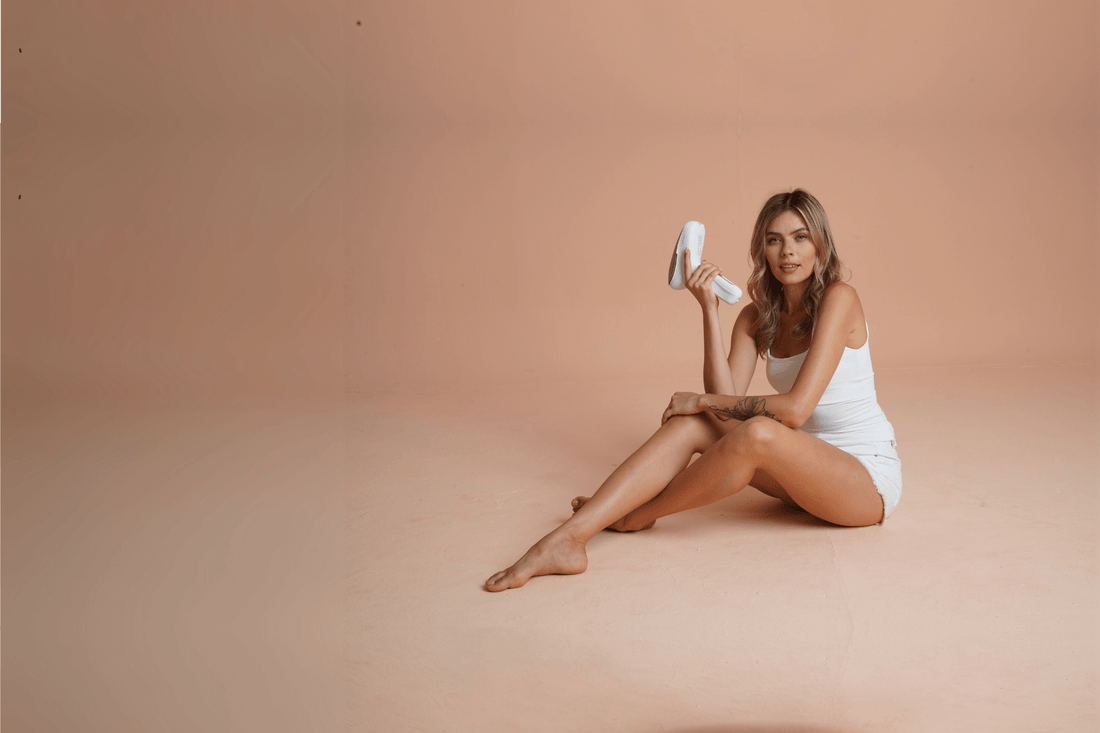
9 Reasons Why Your IPL Hair Removal Isn't Working
Share
IPL (Intense Pulsed Light) hair removal is a popular and effective method for achieving smooth, hair-free skin at home. However, if you’re not seeing the desired results, it can be frustrating. Learn how IPL works and why it might not be delivering the expected results. However, if you’re not seeing the desired results, it can be frustrating. There are several reasons why your IPL device may not be working as expected. Let’s explore the common issues and how to fix them.
1. You Haven’t Used IPL Hair Removal Long Enough
IPL hair removal takes time to show results because it targets hair during its active growth phase. Many users expect instant hair reduction, but it requires consistency and patience.
IPL hair removal requires consistent use over several weeks. Unlike shaving or waxing, IPL works by gradually disabling hair follicles, meaning results won’t be immediate. Most devices, including Sensica’s Sensilight Pro, recommend treatments every one to two weeks for at least 8-12 weeks before noticeable results appear.
I believe that this is working on my hairs. Be patient! It takes time. Use every week and you will see results. It saves you time and money from needless dermatology visits! I am experimenting on dark spots. It js slowly lightening those. Its not intended for that but I am trying it anyway! I believe Its the same as the IPL LASER at the dermatologist so I am giving it a go!!!
💡Solution: Stick to the recommended treatment schedule and be patient. Hair reduction is a gradual process.
2. Your Hair or Skin Tone May Not Be Suitable
IPL technology is most effective on lighter skin tones with darker hair because it targets the pigment (melanin) in the hair. If your hair is too light (blonde, gray, white, or red) or your skin tone is too dark, the device may not work as effectively.
💡 Solution: Check the compatibility chart for your IPL device. If you have light hair, consider alternative methods such as electrolysis or professional laser treatments.

3. You’re Not Shaving Before Treatment
Leaving hair on the surface can reduce the effectiveness of IPL because the energy gets absorbed by the visible hair instead of reaching the follicle.
💡 Solution: Shave the area before using IPL but avoid waxing or plucking, as these remove the hair follicle, making IPL ineffective.
4. Your Device’s Energy Level Is Too Low
Most IPL devices have adjustable intensity settings to cater to different skin sensitivities. If your IPL isn’t working, you may be using it on a too-low setting.
💡 Solution: Gradually increase the intensity level if your skin can tolerate it without discomfort. Always follow the manufacturer’s guidelines to prevent irritation.
5. Inconsistent Treatment or Missed Sessions
IPL hair removal works best when used regularly and consistently. Missing treatments or using the device sporadically can lead to slower results.
💡 Solution: Set a reminder on your phone or calendar to ensure you stick to your treatment plan.
6. Hormonal Changes Affecting Results
Hormonal fluctuations due to pregnancy, menopause, or certain medical conditions can cause new hair growth, even in previously treated areas.
💡 Solution: If you suspect hormones are affecting your results, consult a dermatologist for advice.
7. You’re Not Covering the Area Properly
If you’re not applying the IPL flashes evenly across the treatment area, some hair follicles might be missed, leading to patchy results.
💡 Solution: Overlap slightly and ensure full coverage during each session. Some IPL devices, like Sensica’s Sensilight Pro, have built-in sensors to help ensure even application.
8. Your Hair Growth Cycle Affects Results
Hair grows in different cycles (anagen, catagen, telogen), and IPL is only effective on hairs in the active growth phase (anagen). This is why multiple sessions are required to target all hairs.
💡 Solution: Keep using IPL consistently over several months to catch hairs at the right stage of growth.

9. The Device’s Bulb or Flash Lifetime Is Running Out
IPL devices have a limited number of flashes before needing replacement or a new device. If your device is older, its effectiveness may decrease.
💡 Solution: Check if your device needs a replacement lamp or if it has reached its flash limit.
Final Thoughts
For long-term success with IPL device, consistency and proper technique are key. Ensuring your device is suitable for your skin and hair type, following the correct treatment schedule, and using the right intensity levels can all make a significant difference in achieving the best results.
If your IPL device isn’t working as expected, don’t worry—most issues have simple fixes. By ensuring consistent use, proper preparation, and following the right settings, you’ll improve your results and enjoy smooth, hair-free skin with time.
Looking for a clinically tested, dermatologist-approved IPL solution? Discover Sensica’s Sensilight Pro, designed for safe and effective at-home hair removal.
Shop now at Buysensica.com and start your journey to silky-smooth skin!
